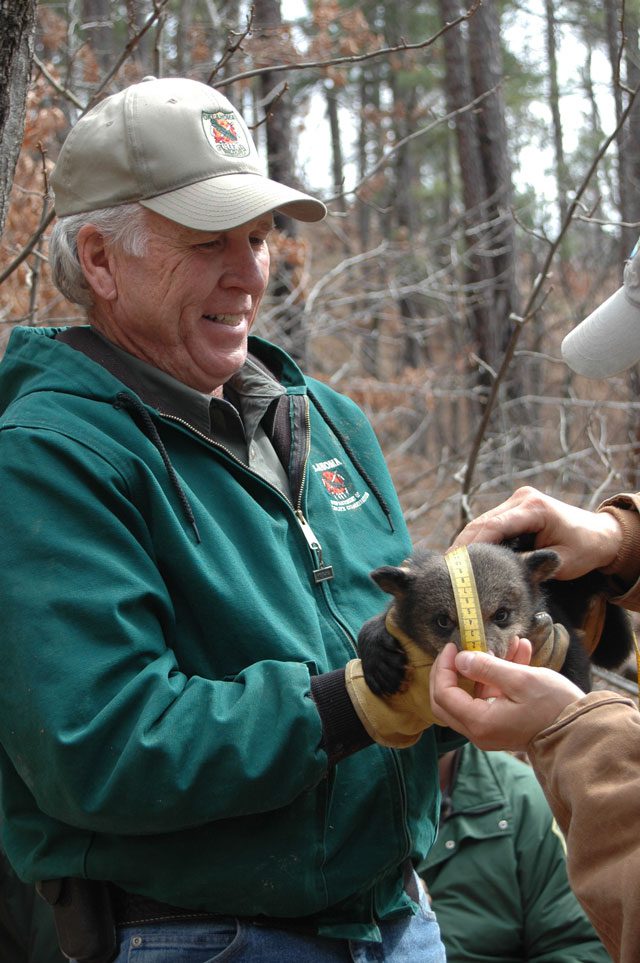
[dropcap]Sightings[/dropcap] of black bears in Broken Arrow, Wewoka and Ada in 2015 led to discussions about the animals moving out of their preferred forests and streams in eastern Oklahoma.
The population of black bears has increased in those habitats – the Ozark foothills in the northeast and the Ouachita Mountains in the southeast – but it has been a slow, steady growth, says Jeff Ford, a biologist for the LeFlore unit of the Ouachita Wildlife Management Area.
He attributes the increased numbers between Interstate 35 and those hilly, wooded areas to more people having outdoor cameras … and Bubba Bear not liking to get hit by Mama.
Most of what wildlife conservationists call irregular sightings (those outside normal habitats) are of juvenile male black bears run off by their mothers.

“It’s all in their DNA,” says Ford, adding that sows want to have genetic diversity for their next breeding periods. “The young males get the hint after they get smacked around by their mothers.”
The “teenage” males may be big, but the “sows are smarter,” says Ford, likening the behavior to a small-statured mother getting a towering son to do anything with just a glare.
“There’s going to be a larger boar for the sows, so those younger males look for their own territory,” he says, “which includes food, water and shelter. Unfortunately, they can find that in a person’s backyard. They’re sly. It’s not that they haven’t been there before. It’s just that a lot of people have more cameras out day and night.”
Jena Donnell with the Oklahoma Department of Wildlife Conservation says black bears heavily populated eastern Oklahoma before farming changed the land in the early 1900s.
“We took over their habitat a long time ago,” she says.
Wildlife officials reintroduced black bears into western Arkansas in the 1970s, ’80s and ’90s; subsequent generations migrated into the Sooner State. Oklahoma State University’s Department of Natural Resource Ecology and Management is conducting studies to determine black bears’ precise number, but a solid estimate is around 2,000.
The mating season for black bears ends around June 30, Ford says, then their activity will increase again in August, when vegetation dries out until berries ripen in the fall.
What to Do If You See a Black Bear
Jeff Ford, a Ouachita Wildlife Management Area biologist, says encounters with black bears are usually uneventful. “Most of the time it’s going to run off. It’s just as curious seeing you as you it. If the bear doesn’t run, stop and stand still. You may be the first person it’s ever seen. If you’re wearing sunglasses, take them off because the lenses look like a wide-eyed sign of aggression to them. Don’t take off running. Just back away from the bear, make some noise and let that bear know that you know it’s there. Take bear spray with you. It will shoot 25 yards. Don’t walk toward the bear. Don’t threaten the bear. But beware that the wind could blow the spray back into you.”

























